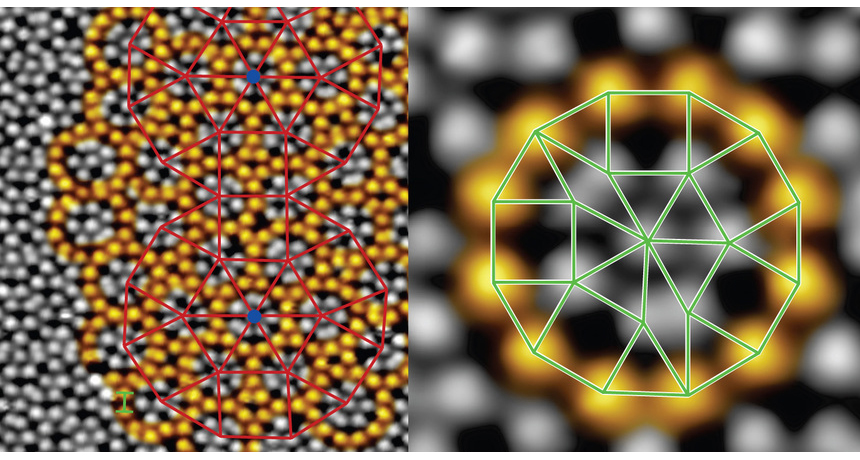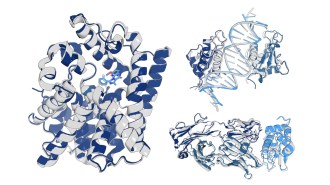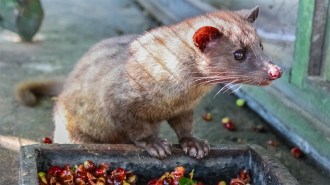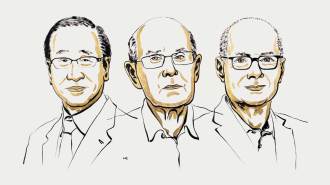Crystal-crystal contact makes quasicrystal

RING OF TWELVE High-resolution scanning tunneling microscope images show the dodecagonal structure of a wide part of a newly formed quasicrystal (left) and a detailed view of one ring (right). The colored shapes represent the predicted arrangements in an ideal 12-sided structure.
S. Förster et al/Nature 2013






